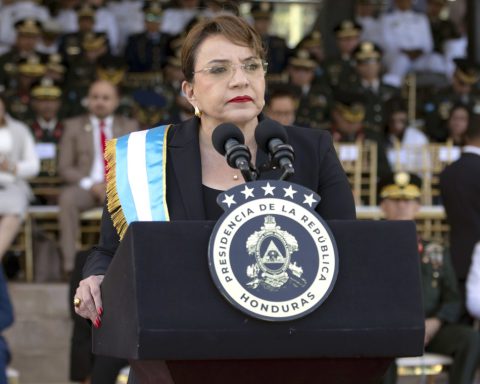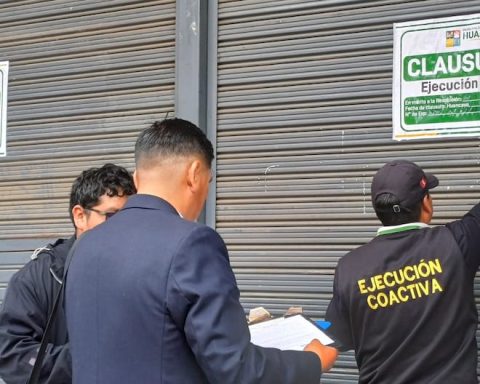More and more the fifth generation of gridis mobilebetter known as 5G, lands with much more force in the countries. Although its deployment promises to revolutionize the way we communicate, it also has a positive impact on other industries.
But before taking that leap into a new generation that requires a greater amount of mobile spectrum, It is necessary to analyze what progress has been made at the regional level with respect to the qualification of this input in recent months.
(5G is getting closer to being a reality in Latin America, says Huawei)
According to a report by the organization 5G Americasan entity that brings together service providers and manufacturers of the telecommunications industry, nine countries in Latin America “have announced, started or completed procedures for the allocation of radio spectrum frequencies for mobile services”, which translates into enabling a greater capacity that will allow the flow of data.
“We are in a great situation at the regional level. Nations such as Argentina, Chile, Colombia, Costa Rica, El Salvador, Mexico, Panama, Peru and Uruguay have arranged for the granting of more frequencies for the telecommunications industry”, highlights José Otero, vice president of 5G Americas.
For Otero, the best way to understand the importance of the release of the spectrum and that it would help the entry of 5G is to locate ourselves on a highway. “The spectrum is like a great highway and the cars are the data. If there are few cars on the road, these vehicles will move without any difficulty, but if many more cars start to circulate, it will be necessary to open more lanes, in this case, enable more spectrum.”, says Otero.
(The new fast charging cell phone: details of its operation).
Among the novelties indicated in the report, it stands out that El Salvador just awarded last February 30MHz in the band of AWS (Advanced Wireless Services), advanced services wireless networkincluded in 1700-2100MHz. For its part, Panama opened a tender aimed at the entry of a third cellular operator in the country, “in addition to receiving spectrum assignment requests for existing operators”.
(ICT Ministry will have UN support for 5G auction).
Also, it is highlighted that Mexico, Colombia and Costa Rica have opened public consultations to grant radioelectric spectrum at various frequencies, both high, medium and low, while in Peru an auction was relaunched to increase the spectrum available in the bands AWS-3 and 2.3GHz.
On the Uruguayan side, this country recently completed the public consultation process, and the draft of the bases and conditions for the radioelectric spectrum auction, passing to the executive branch. The call for this auction is expected to be published soon. Simultaneously, Argentina He has already defined what he will doa 300 MHz concession in the 3.5 GHz band and it is expected that the specifications for the tender will be published in the first half of this year”, highlights the report.
Lastly, the auction process that is being carried out in Chili also including the 3.5GHz band.
(Nokia changes its image so that it is not associated with the cell phone business).
“Given this panorama, we have to say that important advances have been made in the region in order to continue expanding the different technologies. We know that it is not an easy process and that continuous work is necessary”, emphasizes Otero.
The best way to understand the importance of the release of the spectrum and that it would help the entry of 5G is to locate ourselves on a highway, according to 5G Americas.
And while freeing up spectrum is one of the first steps to enable more data flow and prepare the highway for 5G, going back to the aforementioned analogy, the truth is that this process is not something that is “easy or cheap”. .
Vice President of 5G Americas recognizes that a roadmap must be taken into account that includes, as a first measure, the frequencies that are recommended for mobile service internationally.
(The trends of the ICT sector that are already operating in the country).
Secondly, it is necessary to verify that these frequencies are available and what they are being used for locally. Finally, he points out that if the frequencies are available, a viable migration must be guaranteed.
“Now, when talking about making that leap to 5G, the spectrum is one of the components, since there are other elements that also have to be taken into account, such as infrastructure, what is the model of mobile operators, among others”adds Otero.
According to a report by the GSMA organization, which brings together mobile operators and companies related to the industry, 5G technology requires a considerable amount of mobile spectrum, both new and harmonized, which is why it is “should prioritize the defragmentation and release of the main bands”.
“Regulators should aim to provide 80-100 MHz of contiguous spectrum per operator in mainstream 5G mid-bands (i.e. 3.5 GHz) and around 1 GHz per operator in millimeter bands (i.e. 26/28 GHz).”, states the GSMA report.
According to the 5G Americas report, the “low bands” (bands below 1 GHz) They have superior spreading properties, ideal for coverage over wide areas. They have smaller bandwidths compared to higher frequency bands. Examples: 700 MHz, 850 MHz. Provisional or test spectrum is excluded.
(How much does Elon Musk’s satellite internet cost in Colombia?).
The “middle bands” (bands above 1 GHz and below 6 GHz) they have lower propagation properties than the “low bands”, but a greater available bandwidth that allows them to be used as “capacity bands”.
They present a middle ground between capacity and propagation. Examples: 1.9 GHz, 2.5 GHz. Provisional or test spectrum excluded.
JOHANA LORDUY
Journalist Portfolio


















